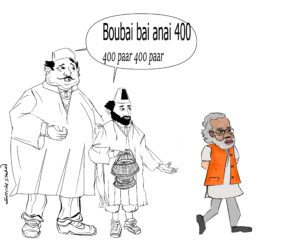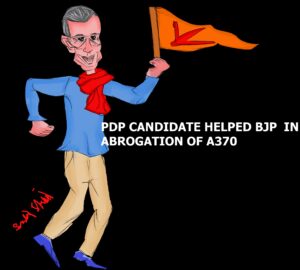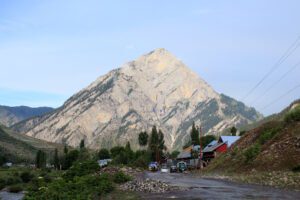
BJP’s poll debacle 2024
The Bhartiya Janata Party (BJP) faced a significant setback in the 2024 Lok Sabha elections, falling from 303 seats in 2019 to 240 seats. Several factors contributed to this decline:
- Caste Dynamics: The BJP struggled to balance caste equations in states like Uttar Pradesh. The non-Yadav OBC and non-Jatav Dalit voters shifted their support to the opposition INDIA bloc, impacting the BJP’s performance in key areas (India Today) (Free Press Journal).
- Opposition Campaigns: The opposition effectively campaigned on the fear that the BJP would amend the Constitution, particularly concerning Dalit rights, which resonated with many voters. This narrative was not adequately countered by the BJP (India Today) (The Wire). BJP’s poll debacle 2024
- Internal Party Issues: There was significant discontent among party workers due to poor coordination between the government and the party. Additionally, the strategy of fielding incumbent MPs and welcoming turncoats did not sit well with the grassroots members (India Today).
- Youth and Employment: Issues such as paper leaks in competitive exams and the controversial Agniveer recruitment scheme alienated the youth, particularly in Uttar Pradesh, which sends a large number of people to the armed forces (Free Press Journal).
- Economic Concerns: Economic issues like inflation and unemployment remained pressing concerns for the electorate, which the opposition leveraged effectively against the BJP (The Wire).
- Polarizing Rhetoric: The BJP’s campaign included polarizing rhetoric, which may have alienated moderate and minority voters. Prime Minister Modi’s speeches often focused on communal divides, which backfired in diverse regions (The Wire).
- State-Specific Issues: Local issues such as the stray cattle problem in rural areas of Uttar Pradesh significantly impacted the BJP’s rural vote bank. Additionally, the Samajwadi Party’s strong performance in regions like Purvanchal further eroded BJP’s support (Free Press Journal).
- These combined factors led to the BJP’s underwhelming performance in the 2024 Lok Sabha elections, reflecting a complex interplay of caste dynamics, economic issues, internal party strife, and effective opposition campaigns. BJP’s poll debacle 2024

What was the position of its Allies during the 5-year government tenure? BJP’s poll debacle 2024
During its tenure from 2019 to 2024, the Bhartiya Janata Party (BJP) maintained alliances with several regional parties, forming the National Democratic Alliance (NDA). These allies played varying roles, contributing to the NDA’s policy decisions and governance strategies. Here’s an overview of the position and influence of some of these allies during this period:
- Shiv Sena: Initially a key ally, the Shiv Sena broke away from the NDA post-2019 elections due to disagreements over power-sharing in Maharashtra. This significantly impacted BJP’s political dynamics in the state (Wikipedia).
- Janata Dal (United) [JD(U)]: Led by Nitish Kumar, the JD(U) was a crucial ally in Bihar. However, the alliance faced strain, particularly around the time of the 2020 Bihar elections and subsequent state politics. JD(U)’s eventual exit from the NDA was a notable setback for the BJP in Bihar (India Today).
- Shiromani Akali Dal (SAD): The SAD was another long-term ally that left the NDA in 2020 due to disagreements over the farm laws. This exit weakened BJP’s standing in Punjab, where SAD had a significant support base (Wikipedia).
- Smaller regional parties: The BJP also allied with various smaller parties, such as the Lok Janshakti Party (LJP), Apna Dal, and Rashtriya Lok Samata Party (RLSP). These alliances were crucial for the BJP in states like Uttar Pradesh and Bihar. However, the departure or weakening of these alliances closer to the 2024 elections posed challenges for the BJP (Wikipedia) (India Today). BJP’s poll debacle 2024
Overall, while the BJP’s alliances initially helped consolidate power and influence across various states, the eventual exits and tensions with several allies created challenges, impacting its electoral strategies and governance effectiveness.
What are the main reasons of its failure in Utter Pradesh?
The BJP’s significant loss in Uttar Pradesh during the 2024 elections can be attributed to a combination of strategic missteps, socio-political dynamics, and public dissatisfaction on several fronts:
- Caste Dynamics and Candidate Selection: The BJP struggled to balance caste equations, leading to the alienation of non-Yadav OBCs and non-Jatav Dalits, who shifted their support to the opposition alliance, INDIA Bloc. Furthermore, there was significant internal dissent regarding candidate selection, with local leaders feeling sidelined and imposed upon by the central leadership (Free Press Journal) (India Today).
- Narrative on the Constitution and Reservations: The opposition effectively propagated a narrative that the BJP intended to amend the Constitution to end reservations for OBCs and SC/STs if it secured a large majority. This created fear among Dalit and backward caste voters, significantly impacting BJP’s support base in these communities (Free Press Journal) (The New Indian Express) (Scroll.in).
- Economic Issues: Economic concerns such as high inflation, unemployment, and farmer distress were critical. The end of pandemic-era food ration schemes exacerbated the impact of food inflation, while high unemployment rates and issues like the police recruitment exam paper leak further fueled dissatisfaction among the youth (The New Indian Express) (Scroll.in).
- Social and Religious Factors: Despite expectations that the construction of the Ram Temple would galvanize support, it failed to significantly influence voter behavior in key areas. Additionally, the BJP’s failure to attract minority votes and the perceived misuse of central agencies to target opposition leaders further alienated voters (Free Press Journal) (India Today) (The New Indian Express).
- Lack of Grassroots Support and Anti-Incumbency: The absence of RSS volunteers at the grassroots level and strong anti-incumbency sentiments against sitting MPs also played a role. The party’s central leadership ignored local feedback, repeating many candidates despite evident public discontent (Free Press Journal) (India Today).
- Alliance Dynamics and Opposition Strength: The effective collaboration between the Samajwadi Party and Congress, presented as the “Do Ladkon ki Jodi” (pair of two young leaders), successfully consolidated opposition votes. The Bahujan Samaj Party’s decline also contributed to a more straightforward consolidation of anti-BJP votes (The New Indian Express) (Scroll.in). BJP’s poll debacle 2024
These factors collectively led to the BJP’s poor performance in Uttar Pradesh, reducing its seat count from 64 in 2019 to 33 in 2024. The results in this critical state significantly impacted the party’s overall tally, highlighting the need for a reevaluation of strategies and grassroots engagement (Free Press Journal) (India Today) (The New Indian Express) (Scroll.in).
What was the Modi’ role of handling the 2024 Lok Sabha elections?

Prime Minister Narendra Modi’s personal involvement in the 2024 Lok Sabha elections was marked by several strategic and campaign initiatives aimed at securing a third consecutive term for the BJP. Here are some key aspects of his approach:
- High-Intensity Campaigning: Modi led a vigorous campaign across the country, addressing numerous rallies and directly engaging with the electorate. His speeches often highlighted national security, development achievements, and visions for the future. He maintained a strong presence in key battleground states to galvanize support (Hindustan Times).
- Focus on Development and Governance: Modi emphasized his government’s achievements over the past decade, including infrastructure projects, digital initiatives, and welfare schemes. He positioned these accomplishments as proof of his effective governance and ability to deliver on promises (Newsx).
- Leveraging Social Media and Technology: Modi and his team extensively used social media platforms and technology to connect with voters, particularly the youth. This digital outreach included live streams, interactive sessions, and targeted messaging to ensure widespread reach and engagement (Hindustan Times).
- Personal Connect and Charisma: Modi’s personal charisma and ability to connect with the masses were central to the campaign. He used personal stories, emotional appeals, and a strong narrative of nationalism and patriotism to resonate with voters (Newsx) (Hindustan Times).
- Strategic Alliances: While some traditional allies had parted ways, Modi’s strategy included forging new alliances and retaining critical partners to ensure a broad-based coalition. This included efforts to bring regional parties into the fold and negotiate seat-sharing arrangements effectively (Hindustan Times).
Despite these efforts, the BJP faced significant challenges, including anti-incumbency, economic issues, and effective opposition alliances, which impacted its overall performance in the elections. Modi’s direct involvement and leadership, however, remained a cornerstone of the BJP’s electoral strategy.
How Amit Shah reaction the Poll results? BJP’s poll debacle 2024
Amit Shah’s reaction to the 2024 election results was a mix of personal victory and reflection on the overall performance of the BJP. Shah himself secured a significant win in Gandhinagar, increasing his victory margin from the previous election and defeating his Congress opponent Sonal Patel by a large margin (mint) (Assam Tribune).
Despite the BJP not securing a majority on its own, Shah maintained a confident stance, emphasizing the need to analyze the results to understand the areas of improvement for future elections. He reiterated the party’s commitment to its core principles and highlighted the need for introspection within the party to address any shortcomings (Hindustan Times) (ABP Live).
Shah’s approach to the election results demonstrated his focus on both celebrating the wins and critically assessing the losses, showing a balanced perspective on the party’s performance in the 2024 elections.
How ultimately BJP formed the Government?
Despite falling short of an outright majority, the BJP successfully formed the government after the 2024 elections by leveraging its alliances and strategic negotiations. Here’s how the process unfolded: BJP’s poll debacle 2024
- Coalition Building: The BJP, under the National Democratic Alliance (NDA), managed to secure 292 seats, thanks to key allies like the Janata Dal (United) led by Nitish Kumar, the Shiv Sena (Shinde faction), the Lok Janshakti Party (Ram Vilas faction), and the Telugu Desam Party (TDP). This coalition helped the NDA cross the majority mark in the Lok Sabha (Zee News). BJP’s poll debacle 2024
- Independent and Smaller Parties Support: The BJP also reached out to independent MPs and smaller parties to bolster its numbers. This included negotiations to accommodate their demands while ensuring that the coalition remained stable and cohesive (Zee News).
- Leadership and Strategic Planning: The BJP’s leadership, particularly Prime Minister Narendra Modi and Home Minister Amit Shah, played a crucial role in steering the coalition. Their ability to maintain party unity and effectively communicate with allies was critical in securing the necessary support (Encyclopedia Britannica).
- Continued Popularity of Modi: Narendra Modi’s personal popularity and the BJP’s campaign focus on development and national security resonated with a significant portion of the electorate, helping the party maintain a strong presence in the Lok Sabha, even if not an outright majority on its own (Zee News) (Encyclopedia Britannica).
- Ultimately, through a combination of coalition politics, strategic alliances, and effective leadership, the BJP was able to form the government and Narendra Modi took oath for a third term as Prime Minister (Zee News) (Encyclopedia Britannica). BJP’s poll debacle 2024
Can BJP led NDA Government last long upto 2029? BJP’s poll debacle 2024
The longevity of the BJP-led government up to 2029 depends on several factors, including internal stability, coalition management, economic performance, and public perception. Here are key aspects that will influence the government’s ability to last its full term: BJP’s poll debacle 2024
- Coalition Stability: The BJP’s ability to maintain a cohesive and stable coalition with its allies is crucial. Given the diverse interests and regional dynamics, effective management of alliances will be essential. The leadership must ensure that allies feel valued and their concerns are addressed to prevent any defections or withdrawals from the coalition (Zee News) (Encyclopedia Britannica). BJP’s poll debacle 2024
- Internal Party Dynamics: Ensuring unity within the BJP itself is critical. Any significant factionalism or internal dissent could destabilize the government. Strong leadership and clear communication channels within the party can help mitigate such risks (Zee News) (Encyclopedia Britannica).
- Economic Performance: The government’s ability to manage the economy, control inflation, create jobs, and address issues like unemployment and farmer distress will significantly impact its longevity. Positive economic performance can bolster public support and reduce the chances of widespread discontent (Zee News).
- Policy Implementation and Public Perception: Successful implementation of key policies and maintaining a positive public perception are vital. The government needs to ensure that its initiatives, such as welfare schemes and development projects, are effectively reaching the intended beneficiaries and making a tangible difference in their lives (Zee News). BJP’s poll debacle 2024
- Handling Opposition and Criticism: The government must be adept at handling criticism and opposition both within and outside the parliament. Effective communication strategies and transparent governance can help mitigate the impact of opposition campaigns and maintain public trust (Encyclopedia Britannica).
- Leadership and Vision: The continued leadership of Narendra Modi and his ability to inspire confidence and trust among the electorate will play a significant role. His vision for the country and ability to articulate and implement it will be key to the government’s stability (Zee News) (Encyclopedia Britannica). BJP’s poll debacle 2024
While these factors suggest that the BJP-led government has the potential to last until 2029, unexpected challenges, such as economic downturns, major policy failures, or significant political scandals, could jeopardize its stability. Continuous assessment and adaptation to the evolving political and socio-economic landscape will be crucial for the government’s longevity.
What is the approach of INDIA block over this outcome? BJP’s poll debacle 2024
India Block Reaction 2024 election results.

The INDIA bloc, a coalition of opposition parties in India, has expressed a mixed response to the 2024 Lok Sabha election results. Despite the BJP-led NDA securing enough seats to form the government, the INDIA bloc has achieved significant gains, particularly in key states like Maharashtra and Uttar Pradesh, which indicates a substantial shift in voter sentiment.
Leaders of the INDIA bloc, including Congress President Mallikarjun Kharge, have described the election outcome as a clear mandate against Prime Minister Narendra Modi and his administration’s policies. Kharge emphasized that the results reflect a strong opposition to Modi’s leadership and governance style (India Today) (India Today). BJP’s poll debacle 2024
The bloc, comprising parties such as the Congress, Samajwadi Party, Trinamool Congress, and Dravida Munnetra Kazhagam (DMK), collectively won a considerable number of seats, showcasing their strength and unity in the face of BJP’s dominance. For instance, the Congress secured 99 seats, while the Samajwadi Party and Trinamool Congress won 38 and 29 seats respectively (India Today).
Despite their impressive performance, the INDIA bloc’s inability to form a government underscores the challenges they face in converting electoral gains into executive power. However, their success in increasing their parliamentary representation suggests a growing influence that could affect future political dynamics and legislative agendas in India (India Today). BJP’s poll debacle 2024

The Gupkar Alliance and The Lok Sabha Elections
What are the reasons for poll debacle of BJP?
The Bhartiya Janata Party (BJP) faced a significant setback in the 2024 Lok Sabha elections, falling from 303 seats in 2019 to 240 seats. Several factors contributed to this decline:
What was the position of its Allies during the 5-year government tenure?
During its tenure from 2019 to 2024, the Bhartiya Janata Party (BJP) maintained alliances with several regional parties, forming the National Democratic Alliance (NDA). These allies played varying roles, contributing to the NDA’s policy decisions and governance strategies. Here’s an overview of the position and influence of some of these allies during this period:
How ultimately BJP formed the Government?
Despite falling short of an outright majority, the BJP successfully formed the government after the 2024 elections by leveraging its alliances and strategic negotiations. Here’s how the process unfolded: BJP’s poll debacle 2024
Can BJP led NDA Government last long upto 2029?
The longevity of the BJP-led government up to 2029 depends on several factors, including internal stability, coalition management, economic performance, and public perception. Here are key aspects that will influence the government’s ability to last its full term: BJP’s poll debacle 2024






